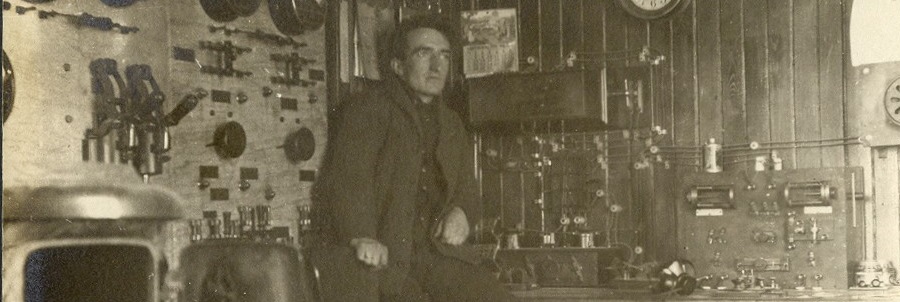
Drop me a line -->
Estevan Wireless in early the 1910's.
In 1911 it was reported that there were 35 marine coast stations, some government others private, between Cordova Alaska to San Diego California. Also 112 vessels, private and commercial, on the north Amercian west coast were fitted with wireless.
In November 1919 all British registered vessels were required to be fitted with a serviceable wireless station and operator.
On this coast, the Union Steamship "Camosun" was the first vessel to be fitted with wireless. The Marconi Company installed the equipment in July 1907 in anticipation of the promised coast stations. The Marconi Company's policy of no communication with another station unless it too was fitted with that company's equipment, led to the equipment being removed from the "Camosun" eleven months later since the new wireless coast stations were fitted with Shoemaker wireless.
Sources
The history is given in the photos and narratives of the people who were there. All the original staff have passed away now, but their descendants stumble across this site and pass on photos and family information.
Newspaper clippings help fill in some of the blanks.
Resources used are:
Victoria Colonist Newspaper archive,
Victoria Times Newspaper archive,
Newspapers.com archive,
Victoria Library newspaper microfilms,
British Columbia Government online Archives,
Larry Reid's book "The Story of the West Coast Radio Service", Chameleon Publishing 1992,
Leona Taylor and Dorothy Mindenhall, "Index of Historical Victoria Newspapers". It appears these two ladies have leafed through old newspapers and copied marine news relating to Vancouver Island's west coast.
Canadian census documents.
British Columbia commercial directories, such as Henderson's in the 1910's.
Relatives of several radio operators who stumble on this site.
In 1907 the Dominion Government built a six foot wide life saving trail and telephone line between Carmanah lighthouse and Bamfield complete with provisioned cabins for stranded mariners. Keeping the trail and its associated bridges, ladders and telephone line maintained was the duty of a local man. Nevertheless, storms caused the telephone link to fail, often for days, due to falling trees or wind breaking the wire.

The main shipping route to the rest of the world was through the 100 nautical mile Strait of Juan de Fuca, a bit tricky to find from seaward and often filled with contrary winds. There were a couple of lighthouses in the Strait, nothing major northwards. Vessels would sail, only to vanish, and expected vessels failed to arrive in port. Often debris found on a coastal beach would be the only hint of another tragedy.
Within a decade Triangle was shut down and replaced by Bull Harbour. Ikeda met a similar fate. Alert Bay was added to cover the busy inside passage.
